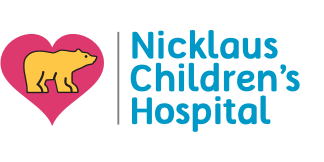- Home
- Parents Home
- Allergy Center
- Asthma Center
- Cancer Center
- Diabetes Center
- Emotions & Behavior
- First Aid & Safety
- Food Allergy Center
- General Health
- Growth & Development
- Flu Center
- Heart Health
- Homework Help Center
- Infections
- Diseases & Conditions
- Nutrition & Fitness Center
- Play & Learn Center
- School & Family Life
- Pregnancy Center
- Newborn Center
- Q&A
- Recipes
- Sports Medicine Center
- Doctors & Hospitals
- Videos
- Para Padres
- Home
- Kids Home
- Asthma Center
- Cancer Center
- Movies & More
- Diabetes Center
- Getting Help
- Feelings
- Puberty & Growing Up
- Health Problems of Grown-Ups
- Health Problems
- Homework Center
- How the Body Works
- Illnesses & Injuries
- Nutrition & Fitness Center
- Recipes & Cooking
- Staying Healthy
- Stay Safe Center
- Relax & Unwind Center
- Q&A
- Heart Center
- Videos
- Staying Safe
- Kids' Medical Dictionary
- Para Niños
- Home
- Teens Home
- Asthma Center
- Be Your Best Self Center
- Cancer Center
- Diabetes Center
- Diseases & Conditions
- Drugs & Alcohol
- Expert Answers (Q&A)
- Flu Center
- Homework Help Center
- Infections
- Managing Your Medical Care
- Managing Your Weight
- Nutrition & Fitness Center
- Recipes
- Safety & First Aid
- School & Work
- Sports Center
- Stress & Coping Center
- Videos
- Your Body
- Your Mind
- Para Adolescentes
Safety Tips: Skateboarding
There's something undeniably cool about skateboarding. But skateboarding injuries do happen, particularly if riders skate in the wrong place or don't wear protective gear.
To keep it safe while skateboarding, follow these rules and safety tips.
Safe Skateboarding Gear
Choose the skateboard that's right for your style or activity (for example slalom, freestyle, and speed). Before heading out to skate, you need:
- a helmet that fits well. It should be a multi-sport helmet or one specifically meant for skateboarding. Don't ride a skateboard without a helmet.
- wrist guards to support the wrist during falls
- knee pads and elbow pads
- closed-toe shoes that have soles that don't slip
- goggles or shatterproof glasses
Safe Places to Ride
To prevent injuries, it is very important that riders choose safe places to ride. All surfaces should be checked before riding on them. Skateboard only on surfaces that are smooth without cracks or debris, like garbage or sticks.
Other safety rules:
- Never ride in the street.
- Never skateboard in wet weather.
- When learning to ride, try out skateboarding on a smooth driveway that's away from all traffic, the beginner section of a skate park, or a parking lot that's not being used.
- At skate parks, obey all rules. Stop and look before entering skateboarding areas.
- Do not skateboard in crowded areas.
- One person on a skateboard at a time.
- Never hitch a ride from a bicycle, car, truck, bus, or other vehicle.
- Don't wear headphones while skateboarding.
Safe Riding
Riders will fall while skateboarding. It's part of the sport. To stay safe, use the safety gear listed above and learn how to fall properly:
- Practice falling on a soft surface or on grass.
- Crouch down as you fall so you won't have as far to fall.
- Land on the fleshy parts of your body and roll rather than breaking a fall with your arms and hands.
- Relax while falling instead of going stiff.
- Master basic tricks before moving on to more complicated moves.

© 1995- The Nemours Foundation. KidsHealth® is a registered trademark of The Nemours Foundation. All rights reserved.
Images sourced by The Nemours Foundation and Getty Images.

